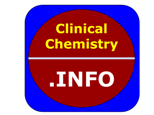Clin Chem Lab Med. 2025 Oct 20. doi: 10.1515/cclm-2025-0909. Online ahead of print.
ABSTRACT
OBJECTIVES: Dental amalgam (50 % mercury (Hg) by weight) is a commonly used material to restore a tooth damaged by decay. In recent years, amalgam safety has become a matter of ongoing controversy. This hypothesis-testing epidemiological study evaluated the relationship between blood Hg concentrations and amalgams in American adults.
METHODS: Examination of the 2015-2016 National Health and Nutrition Examination Survey (NHANES) was undertaken using SAS, version 9.4 (Cary, NC, USA), survey regression statistical modeling (with adjustments for covariates). A total of 180,811,187 weighted-Americans (n=1,377) between the ages of 18-70 years-old, with known: dental filing surface status; urinary Hg concentrations; total and blood Hg species (inorganic and methyl-Hg) concentrations; bodyweight; and urine flow rates were examined.
RESULTS: Significant increases were found in the blood concentrations of total and inorganic Hg, when comparing adults exposed to amalgams as compared to adults not exposed to amalgams. Amalgam surfaces significantly correlated with blood inorganic Hg concentrations, and estimated daily Hg vapor doses from amalgams significantly correlated with blood total and inorganic Hg concentrations. This study supports the importance of blood as an important transport avenue for Hg, which is dose-dependently released by amalgams, to accumulate in tissues and cells throughout the body.
CONCLUSIONS: Persons with amalgams, desiring to lower their blood Hg concentrations, should consult with a dentist trained and certified in safe amalgam removal. Also, pharmaceutical treatments to reduce/render non-toxic the blood Hg concentrations from amalgams should be considered. Efforts should be made to reduce/eliminate the continued use of amalgams.
PMID:41109985 | DOI:10.1515/cclm-2025-0909
